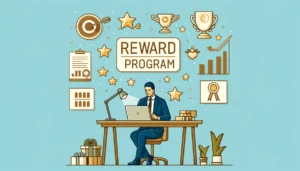HRD Roundtable Report: Restoring Connection Through More Creative Communications
- 7 Min Read
When losing connection is an increasingly concerning challenge, organisations cannot afford to miss the mark in how they communicate internally. Emails, intranet etc. all have their place, but when our people are busier, more distracted, and less embedded in the culture of our organisations than ever, we need to get creative. Culture and purpose are […]
- Event Types
- Date of Event: Sep 1, 2022


When losing connection is an increasingly concerning challenge, organisations cannot afford to miss the mark in how they communicate internally. Emails, intranet etc. all have their place, but when our people are busier, more distracted, and less embedded in the culture of our organisations than ever, we need to get creative. Culture and purpose are what makes the employee/employer relationship meaningful – are you taking them on the journey with you?
Led by Debra Bennett-Jackson, SVP Engagement Lead, Citi and supported by further insights from Justin Barrett, SVP EMEA & APAC, Brightcove, this discussion with senior HR leaders was conducted under Chatham House Rules. This report will contain the key discussion areas and all participants will be anonymised.
A note from Justin Barrett, guest host:
If you found this session valuable, I would like to invite you to our session at the upcoming HRD Collective on the 6th October. We will be sharing more of our insights in a deep dive session, led by Shwetha Anandan, Talent Development Director, Brightcove on “Empowering Creative Connections: Communicating Culture & Purpose”. You can register for free here.
Who owns the internal communications strategy?
A straightforward question, but something that varies a great deal between organisations and there are pros and cons to every approach. It may sit within HR, or the broader comms team. More complex organisations may have individual subject or channel experts that normally sit within other functions entirely.
Internal comms sitting under the same umbrella as external can help drive more consistent messaging – a stronger story about who you as, both to your employees and customers. This connected messaging can also lead to fewer missed opportunities. For example, we heard from one organisation where their social media presence is not particularly strong. However, with the resources of both teams, they are better able to pick up on relevant news and ideas.
What is clear is that whoever owns the strategy, it needs to be open to collaboration. How can we make comms a conversation and not a one-way sharing of information?
How are we tackling engagement with comms?
Ask-me-anything (AMA) sessions are a great method of building trust and making more senior leadership members seem more approachable. This could be done live to make it more ‘in the moment’ honesty or questions can be collected in advance for a recording later. Sharing the answers later can make the answers more authentic – the person will then have time to really think through the best answer or will be able to investigate the question if they do not know. Video is one of the best formats as it feels more transparent. Being able to ask the questions anonymously is also important to success, to ensure people feel safe to float the real concerns. Develop a plan on how to tackle questions that perhaps you are not able to answer as well – this process needs to feel accountable.
Comms teams should also challenge their leaders on a message-by-message basis – why is this communication important, who will understand the messaging, and what do we want people to do with it? If they cannot articulate this before the messaging goes out, it needs further review.
Language also needs to be reviewed both on a case-by-case basis, and as a wider standard. Are we using complicated jargon that people will find difficult to understand or relate to? For example, when discussing financial outlook, is this in terms that everyone will understand?
Also consider what level the comms should be coming from – is this a message that would be best from the CEO? Or the head of region or function? Who are the supporting documents coming from? Can you bring in your local HR teams to support with localising? Can the messaging be segmented so that groups only get the messaging most relevant to them, or delivered in formats we know they engage with? One size does not always fit all.
One participant shared how their weekly blog hands over ownership to someone not on the senior leadership team every 4 weeks to cover something from a different point of view. Of course, this is not always easy for the contributor, and they may need a little extra coaching, but it brings the conversation back to a relatable level and shows everyone they can be part of the wider conversation.
Avoiding communication fatigue
Email is one of the biggest culprits for communication fatigue – we all receive way too many in our day to day, without additional comms on top. The reality however is that email is always going to be a key part of communication strategies. So how can we do it better? If a message is straightforward, can we condense it to just the subject line? Or offer employees time-based options? E.g., if you have 5, 10, 15 mins, here is a different level of detail that you can choose to go into. Really signposting and highlighting the call to action and urgency level is also helpful in helping people prioritise how much they engage with each piece of comms that comes out.
We heard how one organisation has formalised the need for leadership to be able to articulate why a message needs to go out, through a requirement to fill in a form. This form requires a why, a what, and for the requester to condense their idea into a digestible number of words. No essay length emails allowed. If you cannot do this for your messaging, is it important?
This could be expanded to any format:
- what is the message (in the length of a tweet)?
- who is the audience (and what is front of mind for them)?
- based on that, what is the delivery method (e.g., email, phone call, town hall etc.)
One participant shared their experiment with having very few rules about how communication happens and making various channels available. The goal was to see which channels and formats were most popular when allowed to grow organically. However, they are now seeing a lot of fatigue generated by the amount of information that needs to be sorted through on a day-to-day basis. They are starting to develop different communities to combat this – if you are looking for a HR update for example, you can start in that community and then expand your search from there.
Monthly or weekly roundups that bring the key messaging together, including from different platforms can also help people sort through the noise. Think about when to send this as well – a message from the CEO on a Friday is more likely to do well than a Tuesday morning, as people are hopefully winding down for the weekend.
What else can we try?
When designing a comms strategy, or sharing your comms strategy, it is important to think about what good looks like for your team. Is it a particular open rate? Is it a tone of voice? Is it the feedback from the wider team? What is the goal, where are you now, and what have you developed out of? Even just that story can be powerful in showing how you are working to improve in how the organisation communicated.
There are various technology providers and systems that can support with seeing views, likes, time spent – do you have set metrics? Do you have visibility on the trends?
There is also a further education piece here for leadership teams around being more effective communicators. We cannot simply continue to ask our audiences what they want to hear about or how they want to be communicated with – they will not know what they do not know. So, we need to develop the skills in our leaders to better understand their teams and be able to put themselves in their shoes.
Opening for interaction is something we are starting to see more of. If content feels bespoke and has interactive components, people will stay longer. For example, a branching video where you choose your next step will encourage people to stick around and explore. Allowing others to upload their own content ‘YouTube style’ also invites collaboration and interaction, and makes content seem more relatable.








